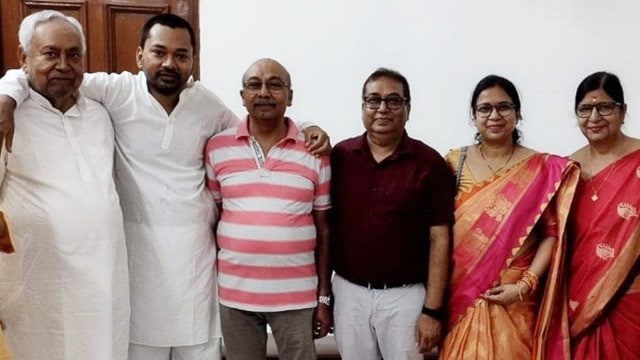
The recent public appeal by Nishant Kumar, son of Bihar Chief Minister Nitish Kumar, urging voters to support his father in the upcoming elections, has fuelled speculation about his potential entry into politics. While this succession plan reflects the growing influence of dynastic politics, it also underscores a larger issue facing regional parties across India — their inability to create second-rung leadership beyond family lines.
The prevalence of political dynasties is not new to India. From the Yadav families in Uttar Pradesh and Bihar to the Thackerays in Maharashtra, regional parties have long depended on family leadership to maintain continuity. However, this strategy often comes at the cost of internal democracy and long-term stability. The prioritisation of family succession over nurturing second-rung leadership creates a fragile political ecosystem heavily reliant on individual charisma. While such moves are often justified as necessary to prevent internal fragmentation, they also highlight a failure to cultivate strong organisational frameworks. Speculation over Nishant becoming Kumar’s political successor follows a similar trajectory.
In contrast, Kanshi Ram’s choice to elevate Mayawati as the leader of the Bahujan Samaj Party (BSP) represented a rare exception in Indian politics. His decision to promote a leader from outside his family created a robust movement for marginalised communities. However, the BSP eventually fell for the dynastic politics as Mayawati declared her nephew Akash Anand her successor.
However, Bihar politics, already mired in dynastic rivalries, could witness intensified competition if Nishant Kumar officially enters politics. The state’s leadership currently features two political heirs: Tejashwi Yadav of the Rashtriya Janata Dal (RJD) and Chirag Paswan of the Lok Janshakti Party (LJP). Nishant’s entry could position him as a new player appealing to younger voters, but it might also alienate those disillusioned with dynastic politics.
Moreover, Kumar’s succession plan could be seen as contradictory to his long-standing criticism of dynastic politics. This move may erode his credibility among voters who viewed him as a leader driven by merit, not nepotism. At the same time, the decision could be a pragmatic attempt to rejuvenate the JD(U) that suffered backlashes in recent years due to frequent political realignments and diminishing influence in the state.
Kumar’s legacy as a leader who frequently shifted alliances — from ending his 17-year partnership with the BJP in 2013 to joining the RJD and Congress in 2015, realigning with the BJP in 2017, and returning to the RJD-led alliance in 2022 before rejoining the NDA in 2024 — adds another layer of complexity to this development. These political “U-turns” have earned him both criticism and respect as a political survivor. However, such manoeuvring has also questioned JD(U)’s future stability and relevance in Bihar politics.
In stark contrast to these regional players, the BJP has demonstrated a more structured approach to leadership development. With strong support from the RSS, the party has cultivated a second line of leadership that ensures stability and continuity. Leaders like Narendra Modi, Yogi Adityanath, and Devendra Fadnavis are products of this well-organised system, which prioritises winnability and grassroots engagement over familial ties.
This model offers valuable lessons for regional parties struggling to balance personal charisma with institutional strength. By decentralising decision-making and investing in leadership development, regional parties can build resilience and reduce dependency on single-family leadership.
The survival of regional parties hinges on their ability to adapt to changing political realities. It also reflects the reluctance of regional leaders to trust non-family members with power and weakens their ideological foundation.
Kanshi Ram’s early BSP and the Dravidian movement in Tamil Nadu serve as examples of how strong ideological frameworks can sustain political movements even in the absence of charismatic leaders.
The future of Indian democracy depends on the ability of its political parties — regional and national alike — to strike a balance between continuity and change. Kumar’s decision reflects malice in regional outfits, but it also opens the door for introspection and reform across the political spectrum. The question remains: Will regional parties seize this opportunity to evolve, or will they continue to be defined by the very limitations that threaten their survival?
The writer is a political commentator and teaches Political Science at DDU Gorakhpur University, Uttar Pradesh